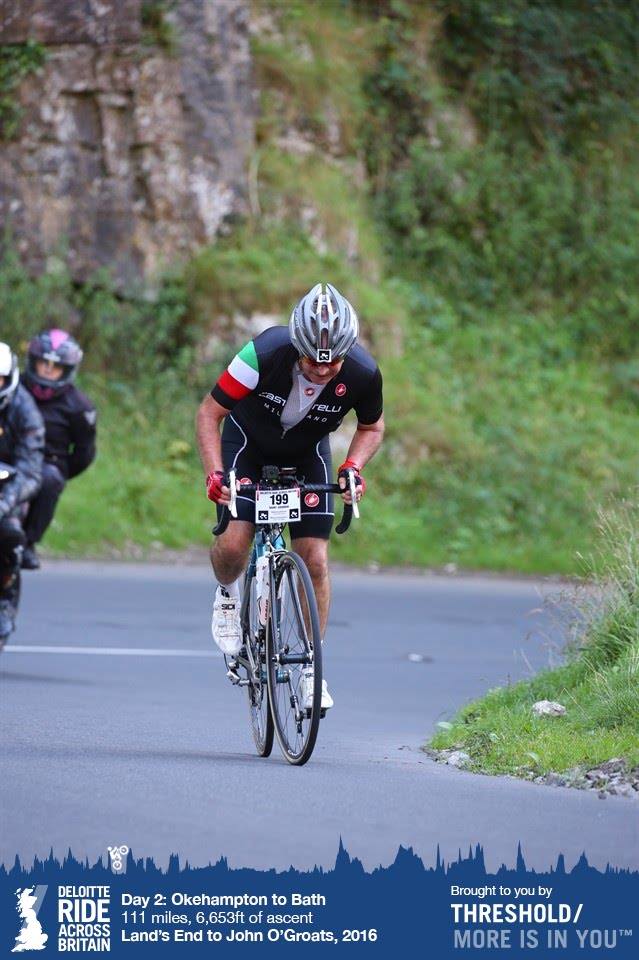The nights are starting to draw in fast as we approach Autumn; on the downside this means less time in the evening or morning to do your midweek training rides, however the beauty of Autumn, the dazzling colours and freshness makes getting out there even more worth it.
I am a huge fan of riding throughout the whole year; Autumn is a very special time, allowing us cyclists to take in the best that nature can show us, and here in the UK it is rarely too cold to go out on your bike. So there really is no need to pack away thoughts of wonderful rides this time of year, in fact it is perfect as long as you prepare (as you would for a Summer ride). So what does good preparation look like ?
The Bike: You do not need to do too much different in preparing your bike for Autumn rides from Summer, however there are a couple of points I’d like to share from my own experiences.
- Tyres : If it is damp, slightly lower your tyre pressure, look at your tyre’s pressure range, don’t go too low or you may start to get pinch punctures (the inner tube may get caught between the tyre and the rim). A lower pressure will give you better grip – but note that due to the narrow tyres on most road bikes, we don’t need to worry too much about tread – the chances of aquaplaning are very small; what we do need to worry about is having no cracks, bulges or signs of wear. With there being more chance of rain, or debris on the road due to wind, consider changing your tyres to heavier “puncture resistant” tyres such as my favourite from Continental, called “Gaterskins”, they have slightly higher rolling resistance, but in my humble opinion and experience worth every penny. If in doubt, ask your local dealer, it is a bit like religion, everyone will have an opinion on the best puncture resistant tyre, but it is pretty much the same unless you intend going professional. Here is a review of the main contenders.
- Brakes and Rims: Clean and check after every ride. Grit or salt in the brake pads not only cause excessive and unnecessary wear and damage to the rim, but you will accelerate the wear on the brake pads.
- Chain and gears. As above, clean and lubricate the chain, the cogs, and both the front and rear derailleurs after each wet ride; there have been great developments in the types of lubricant you can choose, or you could just use something like WD-40, or if your budget can cope, a ceramic “wet” lubricant – it depends on what you are prepared to spend, but not taking care of your components means they will wear out very quickly, it is false economy to put this off.
- Mudguards. There is a little controversy here; some people hate mudguards, some think they are just the best thing. If you are one of the former, try instead an “ass saver” – a small piece of plastic that attaches to your seat and stops the majority of water splashing up your back. If you are one of the latter, then make sure you fit mudguards that have Secu-Clips, such as on SKS mudguards (frankly I would not use anything else). I highly recommend you read this article before making your choice.
- Lights. For a one hour interval training ride in daylight, a good rear light is essential; for longer rides at weekends, take a spare so you don’t get caught out by a low battery (their charge doesn’t last as long in the cold). The sun is getting lower in the sky, so do take a front light, this is more to be seen than to see, so you don’t need to go overboard on the lumens 🙂
Your Clothing. There are a huge number of articles about what to wear in the Autumn/Winter, but here is my advice.
- Several layers are much better than one or two heavy layers. Wear a good base layer (don’t giggle, but in my case a string vest is superb), then a jersey, followed by a long sleeved wind/shower proof jacket. If you do not want to wear a jacket, i.e. no signs of rain, then there are a number of alternatives such as the famous Gabba (a groundbreaking windproof top), a good merino wool jersey, or a windproof gillet If you are intending using short sleeves, take/wear a good pair of arm warmers, and likewise long legged tights/bibs for the legs or at least leg/knee warmers.
- Unless you are naturally gifted with warm hands, wear long fingered gloves – there is a huge range on the market, there are even ranges designed for different temperatures!
- To keep your feet warm, wear overshoes. These are covers that fit over your normal cycle shoe and are water and windproof, but only to an extent. There are heavy duty versions that will keep your feet dry and warm for longer, but if you want a 100% guarantee then you’ll need to invest in proper winter cycling shoes, which can be expensive. I have found that a cheaper option is to stick with overshoes and get some cycling socks that have two layers, separated by a waterproof membrane.
- For cycling glasses, buy ones with interchangeable lenses so that you can swap the dark lens for sunny days with a clear or yellow lens for lower light conditions.
- One of my other “go to” items is the neck warmer. These are highly versatile; not only keeping your neck warm, but can be pulled up over the chin keeping that warm, or even worn on your head as a cap if you are for instance “folically challenged”.
- Finally, please keep visible, wear a “high viz” gillet (wind stopper) or clothing with high viz strips.
So keep riding through the Autumn. The feelings of wellbeing are enhanced as you feel more in touch with the changing world around you; we are after all creatures born out of nature; it is unnatural to confine ourselves indoors. Get out and ride, cycle for (mental and physical) health; there’s never a better time of the year than now.

